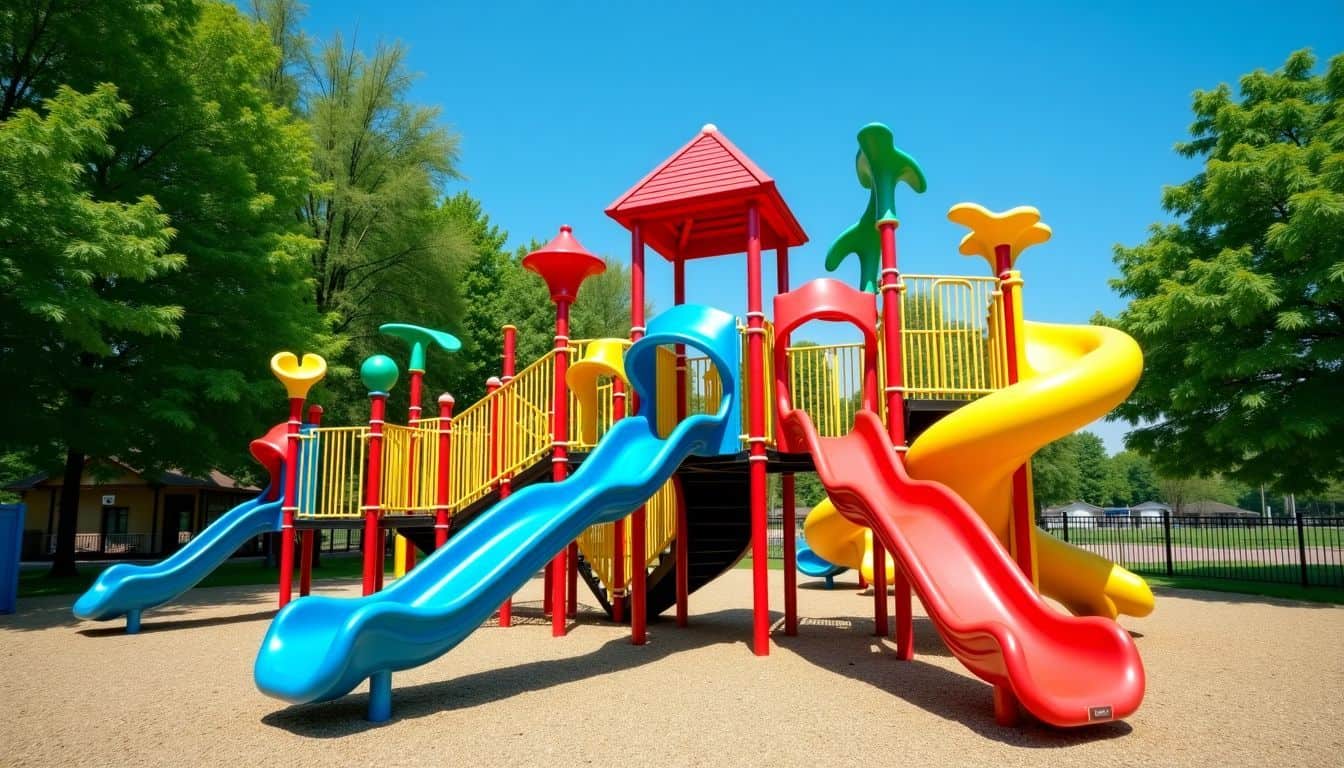Children in public and private schools have access to their school’s playground during recess hours and even on the weekends. But for those families in home school co-ops or micro schools, having a commercial-grade playground isn’t typically in the cards. Thankfully, shared playgrounds are available, and many more home school co-ops and micro schools are choosing to invest in them for good reason.
Shared playground spaces, or joint-use or community-use playgrounds, are outdoor spaces designed to be used by the general public and community. These types of playgrounds are limited to a school yard or a church; instead, they are located in public parks accessible to everyone. Below are three reasons why home school co-ops and micro schools are investing in shared playground spaces.
1. Socialization for Children and Parents
In homeschooling co-ops, it can be challenging to find alternate ways for children to socialize outside of their immediate circle. While pairing them up for group work and school learning can be beneficial in the classroom, shared playgrounds can fulfill the need for free play. Children will likely meet new peers — perhaps those outside of their home school. This can facilitate new friendships that go beyond the home school co-op.
Interacting with other peers sparks children’s imagination and creativity. They may imagine new games or find fun ways to enjoy their break time outside on the playground. Specific playground equipment can also help initiate socialization. For example, a seesaw needs two people to work, while a spinner is always more fun with a friend or two. Swings are best when someone can give you a push, and slides can be turned into a game to see who can go down the fastest.
Shared playgrounds also mean that parents in similar homeschooling or micro school setups can engage and interact with one another. As their children run and play together, parents will likely also start chatting with one another. They may swap homeschooling stories and tips or find other shared commonalities. Having parents from other home-schoolers or micro schools nearby can lead to stronger community ties.
2. Holistic Development
Much to many parents’ dismay, you don’t receive a parental user’s guide after giving birth in the delivery room. What may work for one set of parents or guardians may not necessarily work for another. And that’s okay! There is no right way to raise a child. There are numerous modalities and choices that parents will make for their child’s unique needs.
One modality that is growing in popularity is holistic development. Essentially, this approach refers to the comprehensive growth of an individual, including their emotional, social, physical, intellectual, and even spiritual wellness. It takes into account what a child learns from others, what behaviors they pick up from guardians, and how well they remember information taught in the classroom. It also includes how they grow and develop physically and cognitively, and many of these skills can be picked up on the playground.
Playgrounds also give children a chance to take a break during recess and burn off some excess energy during the school day. This time to reset can lead to better academic results as children return to their desks more focused and less restless. During free play, they also get to use their imagination. Perhaps they pretend they’re pirates climbing to the top of the play tower, or maybe they ask their friends to pretend to be their dogs and run around in circles. No matter how they spend their time on the playground, children are learning and growing physically and mentally, which leads to more well-rounded, developed kids.
3. Accessibility and Shared Resources
From a logistical standpoint, shared playgrounds are more accessible and cost-effective than private playgrounds. For families in home school co-ops, there may not be enough space in their backyards to build a commercial playground. However, a nearby neighborhood playground can serve as an official meeting point for families in home schools or micro schools.
Having an accessible playground for numerous families can also be a more convenient solution. A park within the neighborhood will likely be enjoyed more when they know the kids can ride their bikes or scooters to it, as opposed to a park that a parent must drive to. For those in urban areas, having something nearby means less time spent traveling to get there!
Shared playgrounds are also investments in a community’s overall development. A well-maintained playground will get good use out of it, especially if the equipment is designed for all age ranges in mind. Play equipment that can grow with children means that it can continue to be a centralized destination for families regardless of their children’s ages. This also allows parents with multiple children to visit the same park, knowing that everyone will enjoy themselves.
Takeaways
Playgrounds are an essential component of many children’s lives. Going to a playground gives them the chance to be kids, to run freely and play as they wish. It helps build their physical and cognitive abilities as they test their limits and boundaries. It’s also an opportunity to interact with others, finding common interests and building lasting friendships.
Knowing the benefits of playgrounds, home school co-ops and micro schools are investing more in building and maintaining shared playgrounds for their use. These types of playgrounds are intended to draw in children of various ages and backgrounds, fostering socialization and boosting community ties. With a shared playground, everyone is welcome to join in on the fun — parents included!
